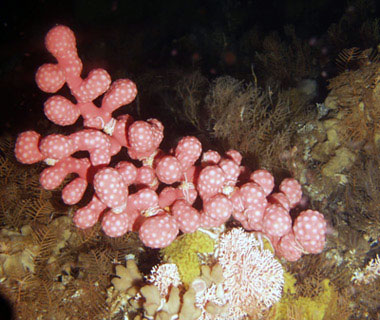
LISTING OF ALASKA COLD-WATER CORALS AS ENDANGERED IS NOT WARRANTED
February 12, 2013
The Center for Biological Diversity petitioned NOAA Fisheries last August to list 44 species of corals under the ESA, citing threats of ocean warming, ocean acidification, commercial fisheries, oil spills and other factors. NOAA considered these factors, but found that there are no empirical studies that have shown harmful effects of these threats to these corals or to similar corals in the area. The ocean acidification research cited in the petition was conducted on types of corals--mostly tropical, reef-building corals--that are very different from the corals the Center asked to be listed. The Alaska coral species in the petition are non-reef building, and exhibit many different characteristics than shallow-water tropical corals, which have been comparatively well researched. All of the species covered in the petition have a type of external tissue that protects them from acidic water, and may not be as susceptible to the effects of ocean acidification as other organisms. In November, NOAA Fisheries proposed the ESA-listing of 66 species of reef-building corals, including 59 in the Pacific and seven in the Caribbean. The 44 species of corals included in this recent petition for listing occupy a vast array of habitats across thousands of miles at up to 4,500 meters in depth, mostly in western Alaska. Alaska has closed more than 600,000 square nautical miles to fishing since 2005, and many of these closures protect cold water coral habitat in the Aleutian Islands, Bering Sea and Gulf of Alaska from the effects of fishing. According to scientists, these closures provide substantial protection for corals. Although NOAA Fisheries will not review the status of the Alaska cold-water coral species at this time, the agency is encouraging interested parties to continue to gather data that will assist with the conservation of cold water corals in Alaska. According to NOAA Fisheries scientists, the study of deep-sea corals in Alaska is a new science, and very little information exists on their basic biology and distribution, environmental variables, or species-specific responses to stressors. In 2012, NOAA Fisheries began a three-year, $2.4 million field research program in Alaska, as part of NOAA's Deep Sea Coral Research and Technology Program, to help answer some of the unknown questions about corals in Alaska. The goals of the program are to better understand the location, distribution, ecosystem role and status of deep-sea coral and sponge habitats.
On the Web:
Source of News:
E-mail your news &
photos to editor@sitnews.us
|
|||
